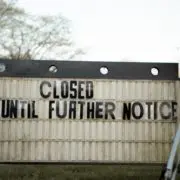College Costs in the Era of COVID-19
Paying for College in the Era of COVID-19
This semester, millions of students, teachers, and college administrators are having to deal with a radically changed landscape while still managing college costs. At many institutions, classes have been cancelled or moved online. Sports programs have been suspended and dormitories, libraries, and labs shuttered. In fact, traditional campus life has been turned upside down thanks to COVID-19, and it’s unclear how long it will last.
Meanwhile, the cost of a college education is higher than ever. According to the College Board, the average total charges at four-year public colleges (in state) for the 2019-2020 academic year were $21,950. Average costs at four-year private nonprofit colleges were more than double that ($49,870).1 And while increases in costs have moderated in recent years, they continue to outpace inflation and median household income, resulting in a growing dependence on student loans; the average student borrower graduating in 2018 owed about $29,000.2
For cash-strapped students and parents, the current crisis has tipped the scales. Many are rebelling at the high costs in the face of a severely diminished college experience. Others have decided to wait until the crisis has passed before enrolling. Still others are questioning the very value of a college degree under current circumstances.
But the issue of soaring college costs is hardly new, and there are two sides to consider.
Students and Parents: Give Us a Break!
“We are paying a lot of money for tuition, and our students are not getting what we paid for,” comments one California parent, incensed at paying in-person prices for education that has moved online. On-campus facilities and services like computer labs, libraries, and networking opportunities have also been severely diminished by closures.
Already suffering from a pandemic-induced recession, many families are feeling the pinch and want relief. Students in particular have been hard hit with furloughs and layoffs, as many rely on retail service jobs to help them get by — the same jobs that have suffered the most in the face of closures and lockdowns. Many students had also signed leases for off-campus housing and are now stuck with them even if classes are cancelled. In short, students and parents are demanding tuition rebates, increased financial aid, reduced fees, and leaves of absences to compensate for what they feel is a diminished college experience.
Colleges: How Can We Manage?
Meanwhile, colleges and universities are taking a major financial hit from the pandemic. Enrollment is down. International admissions and offshore semesters have been halted. Entire programs have had to be suspended for health reasons. What’s more, substantial resources are required to set up an online curriculum, administer the courses, and train educators. There are also major costs involved with constant COVID testing of students and disinfecting of classrooms, offices, and other facilities. And, colleges must continue to pay existing vendor contracts, maintain facilities, and compensate their own staff. The situation has created an existential crisis among smaller colleges, who lack the endowments and funding of larger institutions. For many, it’s a question of survival.
A Mixed Response to Managing College Costs
Given this predicament and the widely varying circumstances faced by different institutions, it’s no surprise that their responses vary widely. A handful of universities have announced substantial price cuts. Some have cut fees. But most have kept prices flat, and a few have even increased them. While many offer refunds of fees and room and board, the reimbursement policies vary from school to school — and nearly all have drawn the line at tuition. Here’s a sampling of actions taken — or not — by different schools:
- Full or partial refunds for room and board costs
- Reduced tuition and fees
- Discounts in the form of scholarships or loans
- Renegotiated financial aid packages
- Frozen tuition at previous year’s level
- Imposition of “COVID fees” to cover added costs
- Increased tuition to cover added expenses
Which of these actions a given school takes depends largely on its financial health and reputation. Smaller, private colleges with more at stake are generally offering more in the form of relief. Larger, well-endowed institutions, such as the Ivy League colleges and large state schools, trend toward the status quo. But there are many exceptions, and each institution has its own approach.
What Can You Do?
If you are a student or parent seeking compensation or relief, your options are limited, especially for the current semester. At nearly all institutions, tuition reimbursement is almost nonexistent after several weeks, no matter what the circumstances. Some schools are now offering tuition insurance, but coverage typically applies only when a student withdraws for medical reasons. To find out what relief may be available at your school, contact the registrar.
Alternatively, you can join the thousands of students and parents who have signed petitions or filed lawsuits demanding tuition cuts, housing reimbursements, and more. Check online to see if any such actions may be already in the works at your school.
In the end, like so many other issues arising from the pandemic, the current predicament facing students and schools is likely to be with us until a COVID-19 vaccine is in place. Even then, skyrocketing costs and mounting student debt pose longer-term issues. Any resolution will take time and likely have far-reaching implications for the costs and nature of a college education.
Notes:
1The College Board, Trends in College Pricing 2019.
2The College Board, Trends in Student Aid 2019.
This material was prepared by LPL Financial. This material is for general information only and is not intended to provide specific advice or recommendations for any individual. There is no assurance that they views or strategies discussed are suitable for all investors or will yield positive outcomes. Investing involves risks including possible loss of principal. Any economic forecasts set forth may not develop as predicted and are subject to change. All performance referenced is historical and is no guarantee of future results.













Leave a Reply
Want to join the discussion?Feel free to contribute!